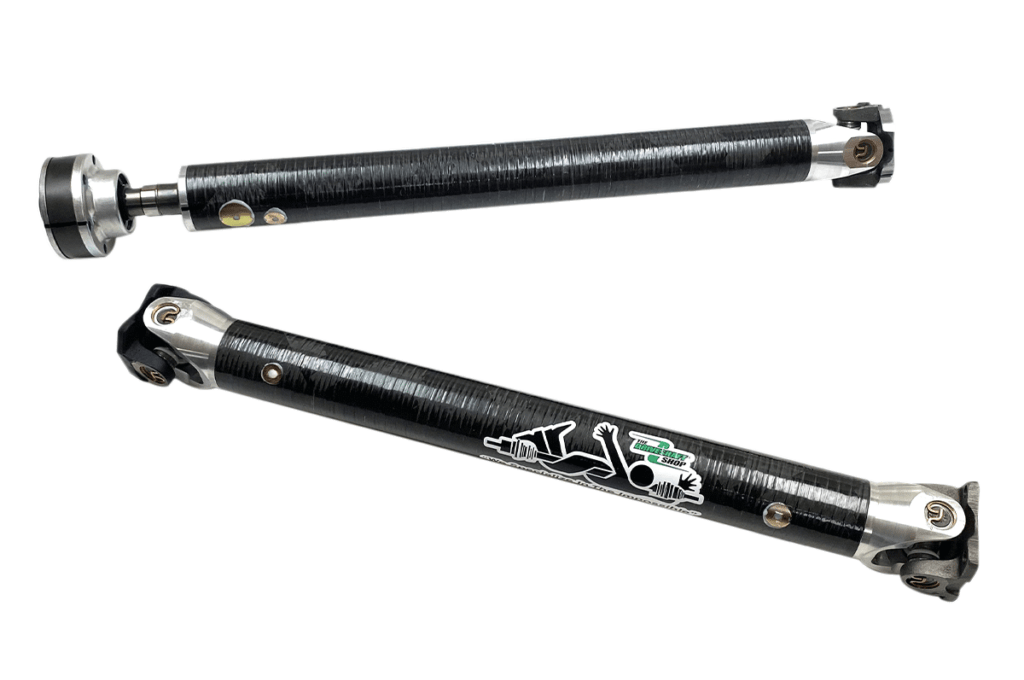Do you have a problem with your vehicle’s driveshaft? This important component of your vehicle’s drivetrain is critical for transferring power from the transmission to your wheels, enabling your vehicle to move. In this month’s blog post, we look at the function of the driveshaft and what signs to look for if there is some type of failure.
The Drivetrain
Before we consider the driveshaft, it is important to understand the purpose of the vehicle drivetrain. This term applies to the vehicle components that are responsible for collectively transferring power from the engine to drive the vehicle.
The drivetrain consists of the transmission, axles, wheels, differential, and of course, the driveshaft. The drivetrain is different from the powertrain, which is a term used to describe the overall components of the vehicle that create kinetic energy that is used by the drivetrain, mainly the vehicle engine.
If you experience a problem with your drivetrain, you should check to see what type of warranty is offered on your vehicle. Because repairs can be quite costly, it is helpful to know what coverage you may be offered by your vehicle manufacturer.
The Driveshaft
A component of the drivetrain, the driveshaft is a cylindrical steel rod that sits on the underside of your vehicle. It is positioned differently based on the type of drive system. For example, a four-wheel drive vehicle has two driveshafts to power the front and rear wheels, while a rear wheel drive has one that connects to the transmission. The driveshaft provides rotational power from the transmission to the differential, which eventually creates the spinning of the wheels.
The constant rotational motion of the driveshaft makes it susceptible to wear and tear, and possible damage. Additionally, driving hazards like potholes and towing excessive weight can impact the proper balance optimization of the driveshaft.
Symptoms of Driveshaft Problems
Problems with your vehicle’s driveshaft may create specific symptoms that may indicate a need for servicing.
These symptoms include:
- Vibration or shuddering: Because the driveshaft is balanced for optimization, you may experience shuddering if it becomes imbalanced. This may be more apparent when you are accelerating from low to high speeds. A loose or disconnected driveshaft may also cause intense vibration when operating the vehicle. It is vital to have your vehicle inspected right away if you experience either of these symptoms. The problem may lie with the universal joints, couplers, or bushings.
- Unusual noises: Failure to your driveshaft can result in unusual noises from the underside, such as a clanking or popping sound. There may be a problem with your CV joint or other components, and this should be addressed right away. Ignoring these issues may only escalate the problem further within your drivetrain.
- Turning resistance: If you are having difficulty turning the wheels, or heavy resistance on a turn, this may indicate a driveshaft problem. If you experience this problem while in motion, the best thing to do is pull to a safe area off the road and contact roadside assistance.
Keep Your Driveshaft Maintained
To keep your driveshaft in good working condition, you should periodically have it inspected for wear and tear, and the parts lubricated within the drivetrain. Proper lubrication is critical for keeping parts from wearing due to friction. Also, you should be cautious with your driving habits, and avoid potholes when possible. If you tow heavy loads on your vehicle, make sure to have the vehicle inspected occasionally to check for any damage or wear to your driveshaft.
If you have concerns about your drivetrain or driveshaft, contact the service professionals at Shade Tree Garage to schedule an appointment.
The post The Driveshaft first appeared on Shade Tree Garage | Morristown, NJ.
